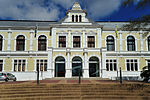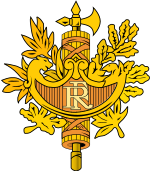Michaelis School of Fine Art
1925 establishments in South AfricaArt schools in South AfricaUniversity of Cape Town

The Michaelis School of Fine Art was founded in 1925, and is the Fine Arts department of the University of Cape Town. The school's current director is Associate Professor Kurt Campbell. There are three research institutions associated with the school, namely The Lucy Lloyd Archive, Research and Exhibition Centre (LLAREC), the Centre for Curating the Archive (CCA) and the Katrine Harries Print Cabinet, which has been instrumental in promoting printmaking as well as conserving and exhibiting prints in the collection. The major graduate degree offered at the School is the Master of Fine Art where students work in both new and traditional fine art disciplines.
Excerpt from the Wikipedia article Michaelis School of Fine Art (License: CC BY-SA 3.0, Authors, Images).Michaelis School of Fine Art
Orange Street, Cape Town City Centre
Geographical coordinates (GPS) Address Nearby Places Show on map
Geographical coordinates (GPS)
| Latitude | Longitude |
|---|---|
| N -33.93 ° | E 18.413611111111 ° |
Address
University of Cape Town Hiddingh Campus
Orange Street
8001 Cape Town, City Centre
Western Cape, South Africa
Open on Google Maps






